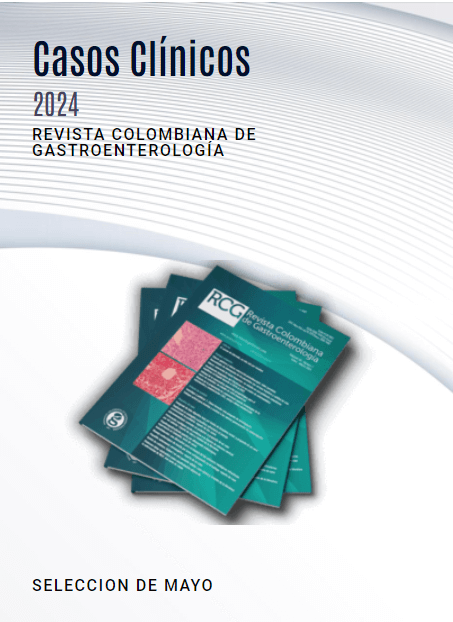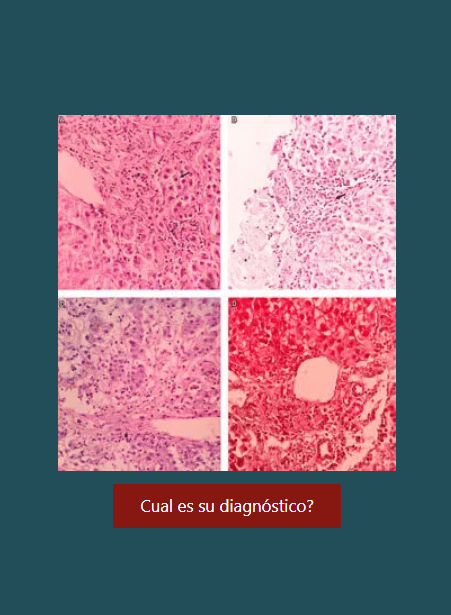Helicobacter pylori y alteraciones endoscópicas en pacientes con obesidad severa, programados para cirugía bariátrica
DOI:
https://doi.org/10.22516/25007440.36Palabras clave:
Helicobacter, obesidad, cirugía bariátrica, gastritis crónicaResumen
En los pacientes con obesidad severa, la única intervención terapéutica eficaz es la cirugía bariátrica y la más frecuentemente utilizada es el bypass gástrico con reconstrucción en “Y” de Roux (BPGYR). Helicobacter pylori es la causa de la mayoría de úlceras pépticas y de cánceres gástricos. Muchos expertos recomiendan investigar y erradicar rutinariamente la infección antes del BPGYR. En nuestro medio no se ha investigado la prevalencia de H. pylori ni las alteraciones endoscópicas en pacientes programados para BPGYR, por lo cual se decidió realizar el presente trabajo.
Materiales y métodos: se incluyeron pacientes adultos con obesidad severa, sin síntomas gastroduode- nales, programados para BPGYR y sometidos a endoscopia digestiva alta preoperatoria.
Resultados: desde marzo de 2007 a julio de 2014, se incluyeron 83 pacientes. El 87,95% eran mujeres. La edad promedio fue de 46,9±11,4 años (17-62 años). Se encontró H. pylori en el 57,83% (IC 95%: 47,09- 66,96), similar a los no obesos. El 60% tenía algún grado de esofagitis erosiva, várices esofágicas en 2 pacientes y GIST en 1 paciente. Ninguno tuvo atrofia severa (OLGA III o IV).
Conclusión: todos los pacientes tenían alguna alteración en la endoscopia. De estos, 2 pacientes tenían várices esofágicas. La prevalencia de H. pylori es similar a la de los no obesos. Se recomienda endoscopia alta de rutina en todos los pacientes antes BPGYR.
Descargas
Lenguajes:
esReferencias bibliográficas
World Health Organization. Global health observatory data repository. Overweight/ obesity by country. www.who.int/gho/ ncd/risk_factors/overweight/en/ (accesado en mayo 20, 2014).
Centers for Disease Control and Prevention. Adult obesity facts. www.cdc.gov/obesity/data/adult.html (accesado en mayo 20, 2014).
Rodríguez J, Ruiz F, Peñaloza E, et al. Encuesta Nacional de Salud 2007. Resultados Nacionales. Bogotá, Colombia, Ministerio de la Protección Social; 2009.
Berrington de González A, Hartge P, Cerhan JR, et al. Body- mass index and mortality among 1.46 million white adults. N Engl J Med. 2010; 63:2211-9.
Ryan DH, Johnson WD, Myers VH, et al. Nonsurgical weight loss for extreme obesity in primary care settings: results of the Louisiana Obese Subjects Study. Arch Intern Med. 2010;170:146-54.
Sjöstrom L, Lindroos AK, Peltonen M, et al. Lifestyle, dia- betes, and cardiovascular risk factors 10 years after bariatric surgery. N Engl J Med. 2004;351:2683-93.
Buchwald H, for the Consensus Conference Panel. Consensus conference statement: bariatric surgery for morbid obesity: health implications for patients, health professionals, and third-party payers. Surg Obes Relat Dis. 2005;1:371-81.
Nweneka CV, Prentice AM. Helicobacter pylori infection and circulating ghrelin levels - a systematic review. BMC Gastroenterol. 2011;11:7-13.
Boltin D, Niv Y. Ghrelin, Helicobacter pylori and Body Mass: Is There an Association? IMAJ. 2012;14:130-2.
Paoluzi OA, Blanco del VG, Caruso R, Monteleone I, Monteleone G, Pallone F. Impairment of ghrelin synthesis in Helicobacter pylori-colonized stomach: new clues for the pathogenesis of H. pylori-related gastric inflammation. World J Gastroenterol. 2014;20:639-46.
Lender N, Talley NJ, Enck P, Haag S, Morrison M, Holtmann GJ. Review article: associations between Helicobacter pylori and obesity-an ecological study. Aliment Pharmacol Ther. 2014;40:24-31.
Otero W, Gómez M, Castro D. Carcinogénesis gástrica. Rev Col Gastroenterol. 2009;24:314-29.
Rasmussen JJ, Fuller W, Ali MR. Marginal ulceration after laparoscopic gastric bypass: an analysis of predisposing fac- tors in 260 patients. Surg Endosc. 2007;21:1090-4.
Papasavas PK, Gagne DJ, Donnelly PE et al. Prevalence of Helicobacter pylori infection and value of preoperative testing and treatment in patients undergoing laparoscopic Roux-en-Y gastric bypass. Surg Obes Relat Dis. 2008;4:383-8.
Schirmer B, Erennoglu C, Miller A. Flexible endoscopy in the management of patients undergoing Roux-in Y gastric bypass. Obes Surg. 2002;12:634-8.
Cowan GSM Jr., Hiller ML. Upper gastrointestinal endos-
copy in bariatric surgery. En: Deitel M, Cowan GSM Jr (editors). Update: surgery for the morbidly obese patient. Toronto: FD-Comunnications Inc; 2000. p. 387-416.
Anderson MA, Gan SI, Fanelli RD, et al. Role of endoscopy in the bariatric surgery patient. Gastrointest Endosc. 2008;68:1-10.
Sharaf RN, Weinshel EH, Bini EJ, Rosenberg J, Sherman A,
Ren CJ. Endoscopy plays an important preoperative role in
bariatric surgery. Obes Surg. 2004;14(10):1367-72.
Mechanick JI, Youdim A, Jones DB, Garvey WT, Hurley DL, McMahon MM, et al. Clinical practice guidelines for the Perioperative nutritional, metabolic, and Nonsurgical sup- port of the bariatric surgery patient—2013 update: cospon- sored by American association of clinical endocrinologists, the obesity society, and American society for metabolic & bariatric surgery. End Pract. 2013;19:338-72.
Campuzano-Maya G, Hoyos D, Calvo VD, Suarez OA, Lizcano D, Rojas CA. Prevalencia de la infección por Helicobacter pylori en médicos de Medellín Colombia. Acta Gastroenterol Latinoam. 2007;37:99-103.
Bravo LE, Cortés A, Carrascal E, Jaramillo R, García LS,
Bravo PE, et al. Helicobacter pylori: patología y prevalencia
en biopsias gástricas en Colombia. Col Med. 2003;34:124-31.
Porras C, Nodora J, Sexton R, Ferrecccio C, Jimenez S, Dominguez RL, et al. Epidemiology of Helicobacter pylori infection in six Latin American countries (SWOG Trial S0701). Cancer Causes Control. 2013;24:209-15.
Gerson LB. Esophagogastroduodenoscopy. En: Cohen J. Successful training in gastrointestinal endoscopy. Wiley- Blackwell; 2011. p. 31-41.
Thillainayagam AV, Arvind AS, Cook RS, Harrison IG,
Tabaqchali S, Farthing MJG. Diagnostic efficiency of an ultrarapid endoscopy room test for Helicobacter pylori. Gut. 1991;32:467-9.
Otero W, Trepalacios AA. Exactitud del test de ureasa rápida “Ureaya”, 2014, manuscrito en preparación.
Trespalacios AA, Otero W, Mercado M. Impacto de la resistencia de Helicobacter pylori a los antimicrobianos en la eficacia de la terapia triple estándar y en dos triples terapias con levofloxacina en pacientes colombianos. Gastroenterol Latinoam. 2012;23:S35.
Rugge M, Meggio A, Pennelli G, Piscioli F, Giacomelli L, De Pretis G, et al. Gastritis staging in clinical practice: The OLGA staging system. Gut. 2008;13:225-9.
Armstrong D, Bennett JR, Blum AL, Dent J, DeDombal FT, Galmiche JP, et al. The endoscopic assessment of esophagitis: a progress report on observer agreement. Gastroenterology. 1996;111:85-92.
Otero W, Concha A, Gómez M. Polipectomía endoscópica de colon: efectividad y seguridad de la técnica de inyectar y cortar. Rev Col Gastroenterol. 2013;28:10-17.
Küper MA, Kratt T, Kramer KM, Zdichavsky M, Schneider JH, Glatzle J, et al. Effort, safety, and findings of routine preoperative endoscopic evaluation of morbidly obese patients undergoing bariatric surgery. Surg Endosc. 2010;24:1996-2001. 31. Dietz J, Ulbrich Kulcynski JN, Souto KE, Meinhardt NG. Prevalence of upper digestive endoscopy and gastric histopthology findings in morbidly obese patients. Arq Gastroenterol. 2012;49:52-5.
Al-Akwaa AM. Prevalence of Helicobacter pylori infection in a
group of morbidly obese Saudi patients undergoing bariatric surgery: a preliminary report. Saudi J Gastroenterol. 2010;16:264-7. 33. Wong BC, Lam SK, Wong WM, Chen JS, Zheng TT, Feng RE, et al. Helicobacter pylori eradication to prevent gastric cancer in a high-risk region of China: a randomized controlled trial. JAMA. 2004;291:187-94.
Scozzari G, Trapani R, Toppino M, Morino N. Esophagogastric cancer after bariatric surgery: systematic review of the literature. Surg Obes Relat Dis. 2013;9:133-42.
de Martel C, Forman D, Plummer M. gastric cancer: Epidemiology and risk factors. Gastroenterol Clin N Am.
;42:219-40.
Hartin CW, ReMine DS, Lucktong TA. Preoperative bariatric screening and treatment of Helicobacter pylori. Surg Endosc. 2009;23:2531-33.
Rawlins L, Rawlins MP, Brown CC, Schumacher D. Effect of Helicobacter pylori on marginal ulcer and stromal ste- nosis after Roux-en Y gastric bypass. Surg Obes Rel Dis. 2013;9:760-4.
Zeni TM, Frantzides CT, Mahr C, et al. Value of preopera- tive upper endoscopy in patients undergoing laparoscopic gastric bypass. Obes Surg. 2006;16:142-6.
Verset D, Houben JJ, Gay F, Elcheroth J, Bourgeois V, Van Gossum A. The place of upper gastrointestinal tract endos- copy before and after vertical banded gastroplasty for mor- bid obesity. Dig Dis Sci. 1997;42:2333-7.
Salis G. Revisión sistemática: epidemiología de la enfer- medad por reflujo gastroesofágico en Latinoamérica. Acta Gastroenterol Latinoam. 2011;41:60-9.
Hampel H, Abraham NS, El-Serag HB. Meta-analysis: obe- sity and the risk for gastroesophageal reflux disease and its complications. Ann Intern Med. 2005;143:199-211.
Wu AH, Tseng CC, Bernstein L. Hiatal hernia, reflux symp- toms, body size, and risk of esophageal and gastric adenocar- cinoma. Cancer. 2003;98:940-8.
Perommaa-Haavisto P, Victorzon M. Is routine preoperative upper GI endoscopy needed prior to gastric bypass. Obes Surg. 2013;23:736-9.
Chalasani N, Younossi Z, Lavine JE, Diehl AM, Brunt EM, Cusi K, et al. The diagnosis and management of non-alco- holic fatty liver disease: practice guideline by the American Association for the Study of Liver Diseases, American College of Gastroenterology, and the American Gastroenterological Association. Hepatology. 2012;55:2005-23.
Wu R, Ortiz J, Dallal R. Is bariatric surgery safe in cirrhotics? Hepat Mon. 2013;13:e8536.
Shimizu H, Phuong V, Maia M, Kroh M, Chand B, Schauer PR, et al. Bariatric surgery in patients with liver cirrhosis. Surg Obse Relat Dis. 2013;9:1-6.
Descargas
Publicado
Cómo citar
Número
Sección
Licencia
Aquellos autores/as que tengan publicaciones con esta revista, aceptan los términos siguientes:
Los autores/as ceden sus derechos de autor y garantizarán a la revista el derecho de primera publicación de su obra, el cuál estará simultáneamente sujeto a la Licencia de reconocimiento de Creative Commons que permite a terceros compartir la obra siempre que se indique su autor y su primera publicación en esta revista.
Los contenidos están protegidos bajo una licencia de Creative Commons Reconocimiento-NoComercial-SinObraDerivada 4.0 Internacional.

| Estadísticas de artículo | |
|---|---|
| Vistas de resúmenes | |
| Vistas de PDF | |
| Descargas de PDF | |
| Vistas de HTML | |
| Otras vistas | |

















